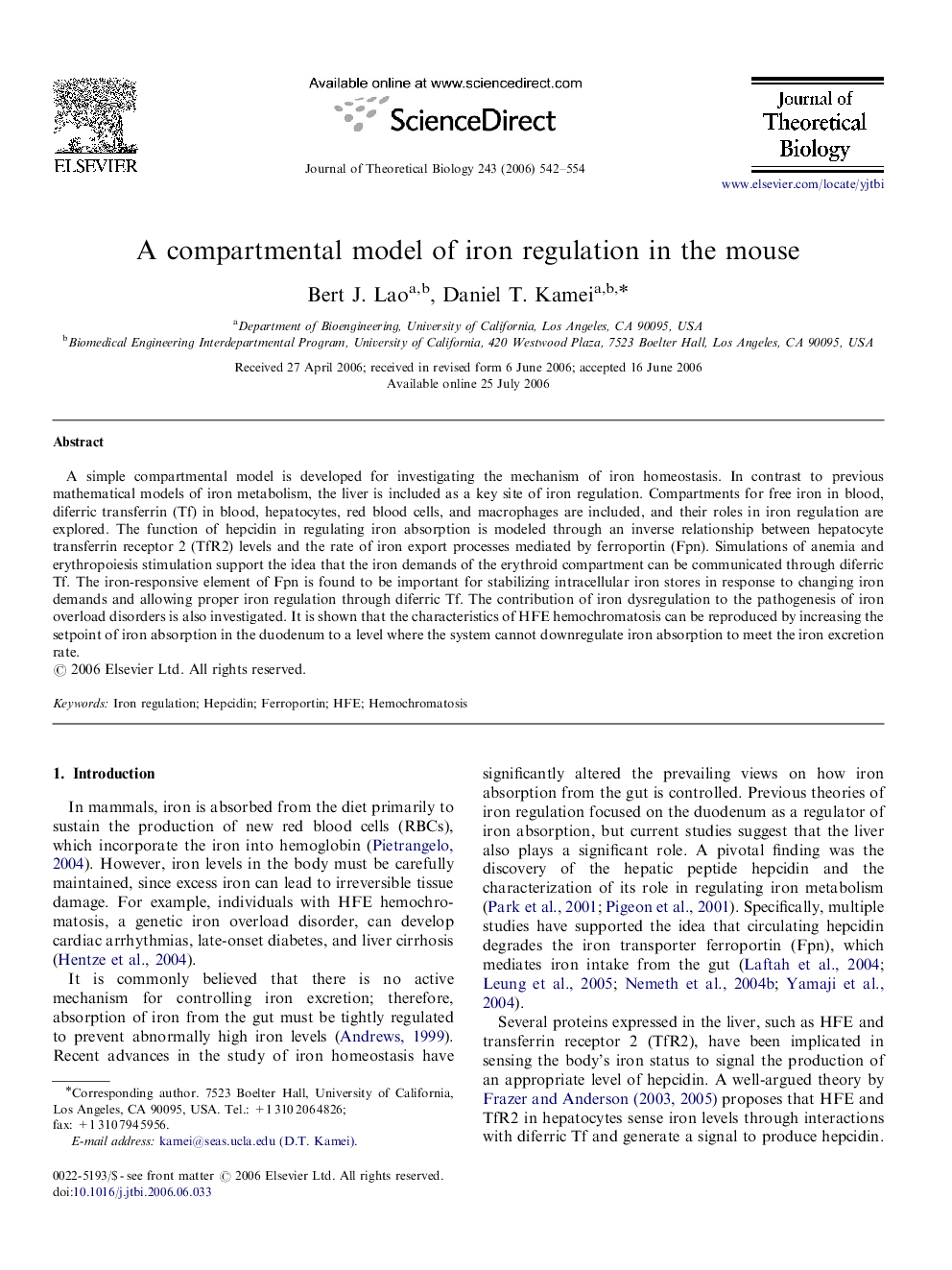| Article ID | Journal | Published Year | Pages | File Type |
|---|---|---|---|---|
| 4499293 | Journal of Theoretical Biology | 2006 | 13 Pages |
Abstract
A simple compartmental model is developed for investigating the mechanism of iron homeostasis. In contrast to previous mathematical models of iron metabolism, the liver is included as a key site of iron regulation. Compartments for free iron in blood, diferric transferrin (Tf) in blood, hepatocytes, red blood cells, and macrophages are included, and their roles in iron regulation are explored. The function of hepcidin in regulating iron absorption is modeled through an inverse relationship between hepatocyte transferrin receptor 2 (TfR2) levels and the rate of iron export processes mediated by ferroportin (Fpn). Simulations of anemia and erythropoiesis stimulation support the idea that the iron demands of the erythroid compartment can be communicated through diferric Tf. The iron-responsive element of Fpn is found to be important for stabilizing intracellular iron stores in response to changing iron demands and allowing proper iron regulation through diferric Tf. The contribution of iron dysregulation to the pathogenesis of iron overload disorders is also investigated. It is shown that the characteristics of HFE hemochromatosis can be reproduced by increasing the setpoint of iron absorption in the duodenum to a level where the system cannot downregulate iron absorption to meet the iron excretion rate.
Related Topics
Life Sciences
Agricultural and Biological Sciences
Agricultural and Biological Sciences (General)
Authors
Bert J. Lao, Daniel T. Kamei,
